
CEO with 51-200 employees
Getting People to Click
Thoughts on Standard Business Practices, User Expectations, Tableau’s Server Pricing Model, and Appealing to the Consumer’s Inner Narcissist.
In my six-plus years of using Tableau I’ve created hundreds of dashboards and thousands of interactive visualizations. In observing these creations out in the field I noticed something rather disappointing – the vast majority of people for whom the systems were created were not interacting with these so-called interactive dashboards.
I’ve made a lot of progress in getting people / organizations over this hurdle (see https://www.datarevelations.com/hey-your-tableau-public-viz-is-ugly-and-confusing.html for some thoughts on the matter) but I realize that there is a very stubborn, business-as-usual mentality that is slowing down the adoption of interactive dashboards.
And as much as I love Tableau, I believe the company’s server pricing model is retarding rather than accelerating the adoption of a more enlightened approach to data exploration and sharing.
Let me explain.
Turning something dynamic into something static –
My students’ experiences
In addition to my consultancy I am a Tableau Training Partner.
One of the somewhat sobering – and disheartening – things I hear from my students is that organizations are using Tableau to embed static images in static reports. That is, while much of the curriculum is spent showing people how to create highly interactive visualizations, the vast majority of attendees report that the way they will share their visualization brilliance is with PDFs and PPTs.
Say what?
You mean your company has invested in Tableau and you’re just going to copy and paste stuff into static documents that get e-mailed?
After a few seconds of sheepish nods all around we usually get into a discussion of why this is happening and what one can do to help organizations embrace the full power in Tableau. Here are some of the things we discuss:
- Change Management
- User Expectations
- Deployment Hurdles
- Cost (i.e., server pricing)
- Make it Irresistible by Making it Personal
Change Management
A lot of organizations look at Tableau as being a type of report writer, something that is tantamount to using a spreadsheet as a word processor. As Tableau makes inroads into organizations it seems it has to first prove itself by duplicating whatever functionality it is supposed to replace, rather than complimenting, augmenting, or leapfrogging the incumbent technology.
While Tableau Server can be cajoled into automating the creation and distribution of PDF files, I don’t think this is a great use for the product. Indeed, if you need different cuts of the data or different pre-filtered views for different personnel – but you want to distribute these as static reports – Tableau is not, in my opinion, your best bet.
So, for those of you in the avant garde of your organizations, you need to manage expectations of your colleagues and higher-ups and explain that Tableau is not a report writer.
User Expectations
I’ve already written quite a bit about this (see the “Usability” portion of https://www.datarevelations.com/hey-your-tableau-public-viz-is-ugly-and-confusing.html) but you just can’t expect people to “get” your dashboards without at least a little instruction and training, especially if you use visual filters.
I’ve brokered a couple of lively debates around visual filters and how long it will be before people just expect clicking a chart to have some impact on a dashboard. For example, if you have a dashboard that has quick filters like the ones shown below, most people will know what these things are and how to work with them.

Figure 1 — Tableau quick filters. People know what these things are and how they work.
However, if you were to expose these same people to the dashboard snippet shown below,very few will know that clicking a portion of one chart will trigger an action that filters all the other charts in the dashboard.

Figure 2 — Visual filters. Without instruction people will not know that selecting a bar or bars will filter by the selection.
This is amazingly potent stuff, but unless you show people how it works they aren’t going to simply discover it on their own.
So, how long will it be before people “know” that charts can be filters, too, and this becomes expected functionality?
Based on nothing more than gut, I predict it will take three years, but I wonder what Tableau could do to accelerate this expectation.
And as I wonder, I find myself thinking about Tableau Reader and Tableau’s Server licensing model.
Deployment Hurdles with Tableau Reader
I’m very grateful that Tableau offers a no-cost reader. The problem is that Tableau Reader is a non-starter with many organizations and potential individual interactors for myriad reasons:
- You lose a lot of people when you ask them to first download and install something.
- Those that you don’t lose may not be able to download and install the reader (e.g., it is not an “approved” app in the organization).
- There is no way to protect the underlying data from prying eyes or to even password protect a packaged workbook.
- You cannot customize the workbook for different consumers of the data (e.g., have certain things pre-filtered based on department, job function, etc.)
- You cannot easily add helpful scaffolding to the dashboards that walk people through how to use the dashboard (whereas you can do this when you embed a dashboard inside a web page).
So, what about Tableau Server?
Tableau Server Pricing
Tableau Server is a great solution, but it can be prohibitively expensive.
The last time I investigated, there were two ways to purchase Tableau Server:
- An individual interactor licensing model that costs $1,000 per license with a minimum of 10 licenses; and,
- An “all-you-can-eat” core licensing model that costs between $160K and $250K, depending on whether you purchase a quad-core or eight-core license.
The first license is very reasonably priced if you have a small group of people that will be interacting with Tableau frequently, and the second license is very reasonably priced if you have a large group that will be interacting frequently.
But what happens when you have a large group of people that wants to make light use of Tableau? That is, what if you have thousands of users but each of these users will only need to interact with Tableau three or four times a year, for maybe 30 minutes at each session?
I have had four different clients that have fit that very scenario – thousands of potential interactors but very few concurrent interactors – and they would love to implement a Tableau server solution but the $1,000 per user or $160K core license is totally untenable.
I understand that Tableau does not want to undervalue its technology, but why not offer a concurrent licensing model? That is, make it so that the server can only handle a certain number of concurrent users at one time. There are so many reasons why this would make sense for both the organizations that want to adopt the technology and for Tableau:
1) The initial cost to adopt will be low as one could purchase a five or ten-user concurrent license.
2) Many people in the organization will be able to “kick the tires”
3) As people see the benefits of this approach, more and more people will use it more and more often.
4) This in turn will lead to organizations purchasing more concurrent licenses.
Make It Irresistible; Make it Personal
Let’s say we surmount the training and cost issues. Will people in fact dig in and click?
I’ve learned a lot by observing how people use – or do not use – the dashboards I’ve created. To get people to use the dashboards they have to care about the data and people will care deeply if the data is about them. That is, the dashboards that get the most traction answer questions like these:
- How is our company doing vs. other companies?
- How is my department doing vs. other departments?
- Where do I stand vs. my peers?
Consider the example below that shows a simplified version of a CTO compensation dashboard I created earlier this year. A person can apply various filters and see salary ranges based on the filter settings.

Figure 3 — Generalized salary visualization.
Now, compare this with the visualization below where we allow the user to enter his / her salary, and then apply the filters. We get a much more compelling story and we make it a lot easier to see how the person is doing vs. others.

Figure 4 — Personalized salary visualization.
This type of dashboard – where we have both an interesting story and we incorporate data about the person viewing it – will generate a lot of interest and once people see how powerful and personally meaningful this is they won’t want to go back to PDFs and PPTs.
And they will click. Often.
Disclosure: My company does not have a business relationship with this vendor other than being a customer.
Senior Developer at a pharma/biotech company with 501-1,000 employees
Fast, quick, powerful rich data visualisations that can be shared across our institute. Best software I've ever used.
What is most valuable?
The ability to quickly connect to all of our datasources, whether its a Oracle or MySQL database, and excel sheet of a csv file and produce a rich interactive visualisation that can then be shared amongst everyone on site is fantastic. The ease of the interface makes it a joy to use.
How has it helped my organization?
Previously all reporting was very static. Each report would answer one specific question and if someone needed more information they would typically have to ask for another report to be made. Tableau allows us to create interactive reports with filtering, parameters and drill downs allowing the viewers to investigate their own data and find their own answers without having to go through a reporting team.
What needs improvement?
It would like to see autosaving, embedded fonts and other options to improve the ease of dashboard layout.
For how long have I used the solution?
I first started using Tableau in June 2011
What was my experience with deployment of the solution?
None, the install seemed very straight forward and we successfully rolled out Tableau Server to all the users on site.
What do I think about the stability of the solution?
No
What do I think about the scalability of the solution?
No
How are customer service and technical support?
Customer Service: Superb on the very few occasions I have had to make use of it. I have had a timely response and my issues have been fixed.Technical Support: Again, I haven't had the need to use this very often but when I did it was excellent. The support forums and technical documentation is second to none.
Which solution did I use previously and why did I switch?
We used a combination of custom webpages written in perl and the Jaspersoft reporting webapp.
How was the initial setup?
After getting the requirements for Tableau server the actual set-up and deployment seemed to go very smoothly.
What about the implementation team?
We used The Information Lab to assist with some of the initial set-up. They were excellent and would recommend them to anyone.
What's my experience with pricing, setup cost, and licensing?
Unknown as I am a power user and not a site admin nor involved in anything to do with license costs.
Which other solutions did I evaluate?
We were introduced to Tableau by a collaborator and went on their recommendation as they had already looked at other vendors.
What other advice do I have?
Download the free demo, connect to some data and play with it. See for yourself how easy and quick it is to produce something that previously took you days to to. Look on public.tableausoftware.com to see what other people have made it with.
Disclosure: My company does not have a business relationship with this vendor other than being a customer.
Buyer's Guide
Tableau
June 2025
Learn what your peers think about Tableau. Get advice and tips from experienced pros sharing their opinions. Updated: June 2025.
861,524 professionals have used our research since 2012.
BI Expert with 51-200 employees
BIME vs. Tableau Comparison
1.1 General
This document compares two BI tool players in the Big Data arena – Tableau (http://www.tableausoftware.com/) and BIME (http://www.bimeanalytics.com/).
1.2 Comparison: BIME vs. Tableau
|
Parameter |
BIME |
Tableau |
Details |
|
Visualization |
8 |
9 |
Many types of graphs and visualization objects |
|
Ad-Hoc |
9 |
9 |
In both tools, a Semantic Layer pane allows for quick data exploration and manipulation |
|
Canned Reports |
8 |
8 |
Both tools support the ability to crete and consume pre-built reports with minimal time and effort |
|
Dashboarding |
9 |
9 |
Both tools have powerful built-incapabilities for authoring, publishing and administering dashboards on the web server |
|
Analytics |
8 |
8 |
calculation engine using a large function library |
|
License costs |
3 |
6 |
BM – Monthly subscription model
|
|
Cloud offering |
9 |
6 |
BM – SaaS-based solution by nature TL – 1. "Tableau Public": TL server hosted in Tableau; 2. Customer server in EC2 instead of on-premise |
|
Ease-of-use / intuitiveness |
8 |
9 |
Intuitive visual analysis, drag & drop, no SQL needed |
|
Ease-of-implementation & maintenance |
9 |
9 |
Very quick setup, semi-automatic semantic layer creation: data-types recognition, dimensions and measures definition, no code, no SQL required |
|
SDK/API |
6 |
7 |
TL – JavaScript API for web apps authoring BM – new API to allow 3 rd party integration and OEM |
|
Israel-based support & PS |
3 |
9 |
BM – Limited IL presence |
|
Financial stability, market presence and track-record |
5 |
8 |
BM – 15 employees, 1 st release 2 years ago, Angel-funded; Large installed-base |
1.1 Summary
Significant strengths of Tableau:
- Financial stability, market presence and track-record (both WW and in IL)
- Tableau's license costs are not cheap, but seem cheaper than BIME's in the long-term
- Israel presence – support and professional services
Significant strengths of BIME:
- Cloud offering – BIME is a SaaS product, thus cloud-enabled top to bottom.
- While Tableau does have some capabilities in this domain, it's not a true cloud solution.
Significant strengths of both:
Visualization, user capabilities (Ad-Hoc, Analytics, etc.) and Ease-of-implementation.
Significant weaknesses of both:
API capabilities are quite limited and immature.
Note:
- It seems like an issue both vendors are aware of and are working on in their roadmaps.
- It is not the most important feature, unless you plan an embedded/OEM solution.
Performance –
Both tools have a native connector to almost every Big Data platform available on the market. While this does not ensure good performance, it does improve the chances of getting better performance than other tools, which do not have such a connector.
Disclosure: My company does not have a business relationship with this vendor other than being a customer.
Business Applications Architect at a tech vendor with 51-200 employees
Tableau has enabled us to make some important business decisions about market potential and product development.
Pros:
- Tableau can be used to retrieve data from multidimensional relational databases, spreadsheets and from cloud databases.
- Simple to develop worksheets and dashboards.
Cons:
- Didn't come across any yet, but yet we are still trying out many features.
Deployment:
Deployment was very easy and went through the installation videos and documentation prior to installation.
The training documents that are available online are very detailed and interactive. The instructors were very clear and concise in their presentations and demos and it was very easy to understand.
Business Metrics:
We have implemented dashboards for web analytics and were able to analyze the international market potential for our future product line, and reorganized the key team players to implement the product, reducing costs by resource allocation and targeting key countries for launching the products.
We have also implemented financial metrics dashboards, and were able to restructure resources, discontinued under-performing products, and shifted focus towards potential future products to be developed and implemented. We saved resource and project costs from discontinuing some products and cutting operating costs to become more profitable.
Alternate Vendors:
We did consider Oracle OBIEE, but the cost and functionality we need for our business is adequate with Tableau.
Disclosure: My company does not have a business relationship with this vendor other than being a customer.
CEO with 51-200 employees
Places great emphasis on the ability to create visualizations without the need for any technical skills
Tableau is charting, graphing and data analysis with go-faster stripes. It has obvious appeal, with prolific amounts of eye-candy and a relatively easy to use interface. As with other products of this nature its utility is firmly anchored in visual exploration of data using every format imaginable. It is not a data mining tool or a text analytics tool, but sits in the traditional business intelligence camp, albeit with a rich visual interface. It is positioned as one of a new breed of BI tools designed to deliver pervasive BI capability throughout the organization, or at least to those who need such tools.

The entry level product is Tableau Public, available as a throttled down free version, or in a Premium version with fewer restrictions. It is primarily targeted at the creation of graphics for web sites and offers a ‘paint-by-numbers’ approach to the creation and publishing of such graphics. A rich set of formats are supported including bar and line charts, heat maps, bubble charts, geo maps and many others (you are spoiled for choice really). Graphics are updated automatically when the underlying data is modified and links can be made to other content on a web site. The Premium version supports larger data sets and the optional suppression of access to the underlying data set. There are numerous web services of this nature (Jolicharts for example), but Tableau Public is certainly one of the best free offerings.
Tableau Desktop supports the visualization of data on the desktop and connects to a bewildering array of data sources, either individually or in concert. The Tableau Data Engine sits on a PC and calls upon the relevant data sources when needed. It executes queries in-memory for speed and switches data in and out of memory automatically, although clearly some wisdom is needed when accessing live data sources.VizQL is Tableau’s Visual Query Language and is claimed to bypass the usual extraction, format, graphing process to build a direct link between data sources and visual representations.
Tableau Server supports browser based tools for data visualization and as such opens BI up to a very wide audience. It provides the very wide range of visualizations and dashboards supported by Tableau, and also make them available on portable devices (iPad and Android).
Tableau places great emphasis on the ability to create visualizations without the need for any technical skills (scripting). Provided Tableau always offers what you need this is fine, the moment you want something different this could be problematical. For this reason I think it is wiser to have both options – scripting free visualizations for run-of-the mill tasks, but scripting capability for more unusual needs. Other offerings are stronger in this respect.
Disclosure: My company does not have a business relationship with this vendor other than being a customer.
I have never used this product but it appears perfect for visualization of data. I got two questions: Is it user friendly? And, does it have a mobile version for use with portable devices? That might just be the motivation I need to study Tableau on my own.
Consultant at a tech consulting company with 51-200 employees
Qlikview vs Tableau? I have to choose and I’m not sure
Most users love Excel, non-users hate it. When it comes to data visualization, Excel is generally dispised, except by those that have to make dozens of charts every single day. I call this the Excel Stockolm Syndrome. These are the forsaken data visualization users that keep making 3D pies when they should know better by now. Tired and overwhelmed. Not in the mood the learn yet another tool just to make those elusive “effective charts”. If you link good visualization to a tool they have no access to, you can be sure that the whole message is lost.
Becoming a Data Visualization Anarchist
I think things can be changed from the inside, improving the way people use Excel. I write for Excel users because I’m one of them. That’s not going to change soon. But I love data visualization, not the tools that make it happen. I specially like interaction, multiple charts and making them available on the web. And I need to manage more data (not big data, just more data). Some things can’t be done in Excel or require too much effort.
The Portuguese poet Fernando Pessoa has a funny short story called The Anarchist Banker. The idea is that only a banker can be a true anarchist, because only a banker can be free from “social fictions”, specially money… In data visualization, this means getting the tools out of the way, by learning them or avoiding them.
I chose the learning path and I’m learning R now. I always wanted to make those scatterplot matrices. And I want to play with the ggplot2 package. A programming language is covered but R is not going to pay the bills.
Enter Tableau and Qlikview
I will not complicate matters by discussing how I chose Tableau and Qlikview and not Spotfire, for example. I just want to choose one. Qlikview vs Tableau. Comparison articles like this and this are very helpful, but a man is a man with his circumstances. Each starting point is different from everyone else. Let me tell you what I think I know about these tools in this early stage.
Tableau

I like Tableau, I have to admit it. I like the fact that you don’t have to fight stupid defaults in design and formatting, because I share the same data visualization principles.
I like its enthusiastic and knowledgeable community. Let me give you two simple examples. I spent a lot of time making this horizon chart in Excel, and Joe Mako quickly came up with a better version in Tableau.
Then I tried to be creative with the bamboo charts and Joe Mako strikes again, with a better implementation. I’m starting to get nervous… (kidding)
I know and respect many Tableau users, not because of Tableau but because I share the same views regarding data visualization.
Apparently, maps in Tableau are good enough, so that’s a good point.
And as a blogger, I want to make my work available to the web, and Tableau Public is a nice option (my population pyramid).
The Guardian often publishes Tableau visualizations. I’d like to try that with the local newspapers here.
On the other hand, we know how stubborn some datavis experts are. Is Tableau that stubborn? Can clear vision and the right principles become a straitjacket? I really hate straitjackets (“the idea of”, never actually tried one…)
In my country, Tableau is virtually unknown and I am not sure if I want to sell shoes in Africa.
Qlikview

I know even less about Qlikview. The first chart I see in its video is the pie chart above. Not exactly a shiny example of good data visualization principles.
Apparently there is a very active Qlikview community on Linkedin but not so much on Twitter. Probably this is meaningful.
I keep reading that Qlikview is better than Tableau when it comes to making dashboards, while you should explore the data with Tableau. It’s a good point in favor of Qlikview (that’s what I need now). Extensions and the market seem to be interesting too.
Qlikview has several business partners here. Actually, I was invited to work in some Qlikview projects in 2013 (obviously I have to learn the basics until then). They can pay a lot of bills.
Its not always about features
Not everything is black and white, not everything can be decided based on feature-by-feature comparison. Not everything is heart, not everything is reason. If I choose Tableau, my data visualization skills will improve a lot. Qlikview is harder to predict. I’m sure there are many users that dislike the pie above. If not, Qlikview can be more, hummm, challenging.
What I’m going to do
I mentioned those Qlikview projects, but I’ll try to remove them from the equation, at least for now.
I have a simple dashboard in Excel and I’d like to create Tableau and Qlikview versions. That’s probably one best ways to evaluate a tool, using my own work.
So, can you help me?
I’d love to learn from you. Can you answer questions like:
- How do they compare regarding maps? Is it simple to add your own maps?
- Is it true that it’s easier to make a a centrally designed dashboard in Qlikview, while Tableau has a more exploratory nature?
- How can I share a Qlikview chart in my blog?
And please don’t tell me I have to learn both…
Disclosure: My company does not have a business relationship with this vendor other than being a customer.
Thanks Jorge!
Director of Data Analytics at a transportation company with 10,001+ employees
A business can learn and adapt to it really quickly. Easy to bring in and train.
Can connect direct to transactional data. They really worked to provide data vizualization for the data to tell a story. This is their strong point. Their performance is good as long as your not bringing in multiple data sources that have complex joints. Really easy to use. A business can learn and adapt to it really quickly. Easy to bring in and train.
Disclosure: My company does not have a business relationship with this vendor other than being a customer.
Tableau is a BI tool that is perfect for small and medium enterprises that probably do not even have an IT department to handle their complex BI needs. With this tool, the businesses are good to go since the program is very easy to use and so learning it is also very simple. The fact that Tableau has an excellent performance and makes use of use of virtualization techniques is the reason it is very popular among businesses.
BI Expert with 1,001-5,000 employees
One major area where Tableau fell short for us is authentication
One major area where Tableau fell short for us is authentication. We would like LDAP (or Windows AD) SSO authentication to the server based Tableau product. We also want Tableau to handle authentication methods back to data sources like SQL Server or SAP BW other than a hardcoded ID/password. At this point I think the product falls a little short. Our workaround is dumping data to text files and then integrate in Tableau at that level. That extra step prevents us from looking at Tableau as an enterprise reporting/analytical tool. We have passed this info to Tableau support and are waiting to see how the product develops going forward.
Disclosure: My company does not have a business relationship with this vendor other than being a customer.
Kevin -- If a you or another leader at your manufacturing co. are willing to be interviewed for a story on your selection of rel. 8.3.2 Tableau software, email me at dring@techtarget.com, where I work as a news writer. Also, interesting comment on your selection by H. Emre.
Buyer's Guide
Download our free Tableau Report and get advice and tips from experienced pros
sharing their opinions.
Updated: June 2025
Popular Comparisons
Microsoft Power BI
Informatica PowerCenter
Teradata
IBM Cognos
Amazon QuickSight
SAP Analytics Cloud
Qlik Sense
Domo
SAP BusinessObjects Business Intelligence Platform
Oracle OBIEE
MicroStrategy
SAS Visual Analytics
Oracle Analytics Cloud
Looker
Apache Superset
Buyer's Guide
Download our free Tableau Report and get advice and tips from experienced pros
sharing their opinions.
Quick Links
Learn More: Questions:
- QlikView or Tableau - Which is better?
- What's your experience or opinion about Spotfire vs. Tableau vs. Qlik?
- I currently use Panorama Necto as a viewer on SQL Analysis services cube--what other solutions are out there?
- Business users moving from Tableau to MS Report builder
- Tableau vs. Business Objects - Which is a better solution for visualization and analysis?
- Tableau vs. Spotfire - What do I need to know regarding pricing and usability?
- I'm looking for real info about licensing, ease of setup and other costs involved. Can you help?
- Tableau 10: Best New/Improved Features
- A journalist is writing a story about which Data Visualization software product to choose. Can you help him?
- Tableau vs. QlikView - functionality and pricing schemes
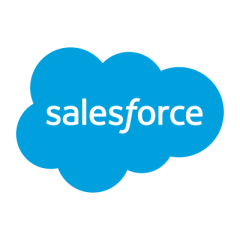


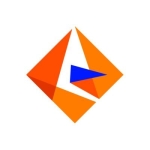
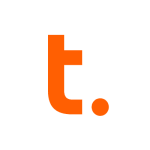



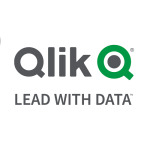
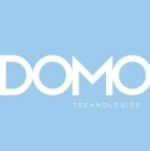

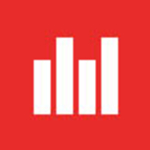
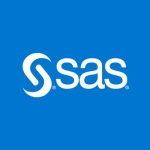



Thanks, Ariel. If Visualman refers to visualization and visual analytics - I would agree with such a statement